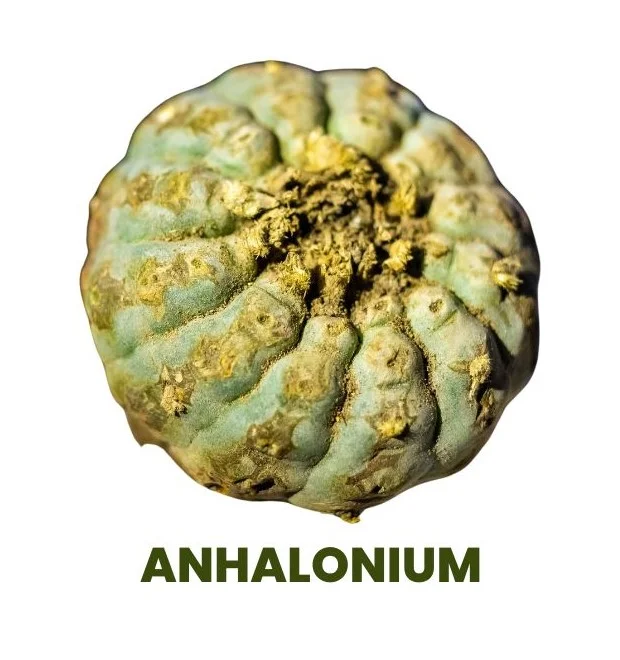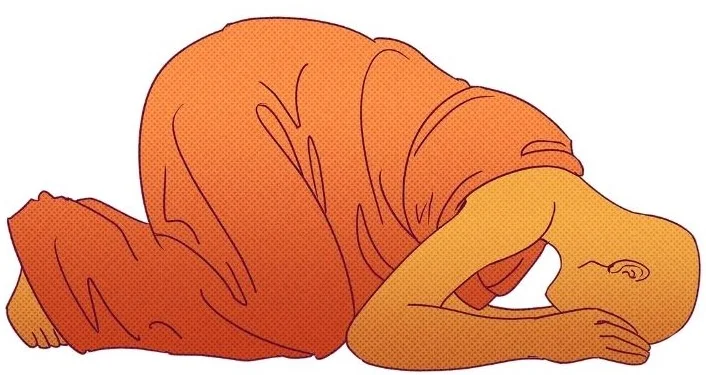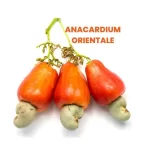Anhalonium, derived from the Mescal Button cactus, is a homeopathic remedy associated with altered states of consciousness and unique perceptual experiences.
It finds its roots in the traditional use of Mescal in indigenous cultures, where it is known for inducing intoxication and visionary states.
In homeopathy, Anhalonium is utilized for symptoms affecting both the mind and body.

Table of Contents
ToggleSOURCE INFORMATION
- Kingdom: Plantae
- Order: Caryophyllales
- Family: Cactaceae
- Genus: Lophophora
- Species: Lophophora williamsii
Common Name: Mescal Button
Origin: The Mescal Button is native to southwestern Texas and various regions in Mexico.
It grows primarily in arid environments, typically in rocky or sandy soils.
The scientific name of the cactus from which Anhalonium is derived is Lophophora williamsii.
Historical Facts
- Cultural and Traditional Use: The Mescal Button has a long history of cultural and traditional use among indigenous peoples in Mexico, particularly in certain Native American tribes. It holds ritualistic and ceremonial significance.
- Hallucinogenic Properties: The cactus contains psychoactive alkaloids, including mescaline, which is known for its hallucinogenic properties. Native tribes historically used the Mescal Button in spiritual and shamanic rituals.
- Modern Usage: Beyond its traditional use, the Mescal Button has gained attention in modern contexts, including recreational and spiritual practices. It has been studied for its effects on consciousness and has inspired interest in areas like psychotherapy.
Homeopathic Preparation
- Remedy Source: Anhalonium is prepared from the dried buttons of the Lophophora williamsii cactus. In homeopathy, the substance undergoes a potentization process to create the remedy.
Note: Anhalonium’s historical and cultural significance is deeply rooted in the rituals and practices of indigenous communities.
The use of the Mescal Button in a homeopathic context is distinct from its traditional or recreational use.
In homeopathy, substances are prepared in a highly diluted form, and their effects are based on the principle of “like cures like,” where a substance causing symptoms in a healthy person is used to treat similar symptoms in a diseased person.
As such, the homeopathic use of Anhalonium is not associated with the hallucinogenic effects of the Mescal cactus. Always consult a qualified healthcare professional or homeopath for appropriate guidance.
DRUG PATHOGENESIS
- Intoxication: Anhalonium induces a unique form of intoxication with effects on the heart, respiratory system, and mental faculties.
- Visionary States: Notable for producing remarkably beautiful and varied kaleidoscopic changes in vision. Visions may include wonderful landscapes, monsters, and gruesome forms.
- Cardiac Tonic and Respiratory Stimulant: Displays characteristics of a cardiac tonic and a respiratory stimulant.
- Neurological Effects: Causes motor incoordination, extreme muscular depression, increased patellar reflex, and, in severe cases, paraplegia.
KEY CHARACTERISTICS
- Source: Derived from the Mescal Button cactus (Lophophora williamsii).
- Traditional Use: Historically linked to the traditional use of Mescal in indigenous cultures, known for its hallucinogenic effects.
- Effects: Known for causing intoxication accompanied by hallucinations, vivid visions, and alterations in sensory perception.

PSYCHOLOGICAL PROFILE
Merging with the Universe
- When individuals consume mescaline, they often experience a profound sense of unity with everything around them.
- It’s as if they dissolve boundaries and become one with the entire universe.
- This sensation closely mirrors the concept of oneness or non-duality taught in Hinduism and Buddhism, suggesting that our true selves, beyond the physical body, are eternal.
Seeking Connection
- This desire for unity typically arises from feelings of not belonging and lacking roots or identity.
- It’s a profound sense of isolation, where the ego feels separate and vulnerable, leading to a fear of losing one’s very existence, beyond just the fear of death.
Confronting the Void
- Imagine stripping away your name and being unable to replace it.
- It leaves a vast emptiness, a void that’s deeply unsettling.
- To fill this void, people often seek connection with something larger than themselves, whether it’s family, community, or society, aiming to transcend individuality and preserve their sense of identity.
Embracing All Existence
- Anhalonium originates from situations where individuals feel utterly alone and fear losing their identity.
- In these moments, the only solace seems to lie in feeling connected not just to their immediate surroundings but to the entirety of existence.
Spiritual Quest
- Many spiritual leaders may have experienced similar feelings of displacement and rootlessness, driving them to seek spiritual understanding and purpose.
Living in a Bubble
- In the cancer miasm, failing to expand beyond oneself risks losing a sense of existence.
- Thus, those influenced by Anhalonium retreat into their own world, isolated from external influences.
Exploring Grand Concepts
- Anhalonium individuals often ponder profound concepts like the universe and space.
- Their experiences are frequently spiritually transformative, unencumbered by fear of losing themselves or their loved ones.
The Influence of Music
- They often find solace in music, which can induce trance-like states, offering temporary escape from their isolation.
- Despite efforts to integrate into groups, they often remain alone in their experiences.
PARTICULAR DISEASE SYMPTOMS
- Headache and Vision Disturbances: Aching head with disturbed vision. Perception of fantastic, brilliant, and moving-coloured objects. Affected by the beating time of music.
- Pupillary Changes: Dilated pupils, vertigo, and a tired brain. Exaggerated reverberation of ordinary sounds. Polychrome spectra may be experienced.
REMEDY RELATIONSHIP
- Comparison: Anhalonium is compared to Agave, Cannabis Indica, and Oenanthe due to similarities in intoxication symptoms and altered states of consciousness.
DOSE
- Administer Anhalonium in tincture form.
FREQUENTLY ASKED QUESTIONS
What are the key characteristics of Anhalonium?
- Anhalonium is characterized by its traditional association with Mescal intoxication, inducing visionary states and alterations in perception.
What are the neurological effects of Anhalonium?
- Anhalonium can cause motor incoordination, extreme muscular depression, increased patellar reflex, and, in severe cases, paraplegia.
How does Anhalonium affect mental symptoms?
- Mental symptoms include a loss of the conception of time, difficult enunciation, feelings of distrust and resentment, and a state of lazy contentment.
Difficult Words Explained
- Polychrome: Having various colors; multicolored.
- Reverberation: Prolonged echoes of sound.
- Patellar Reflex: The reflex contraction of the quadriceps muscle in response to tapping the patellar tendon.
- Paraplegia: Paralysis affecting the lower part of the body.
- Intoxication: A state of being intoxicated or under the influence of a substance.
Dr. Rajan Sankaran’s astute analysis and profound exploration of the mental symptoms of Anhalonium, as documented in “Soul of Remedies,” have significantly enriched our understanding of this remedy’s essence. Through his keen observation and insightful interpretation, Dr. Sankaran has provided invaluable insights into the psychological profile of individuals requiring Anhalonium, shedding light on their unique mental and emotional characteristics, and thereby contributing to the advancement of homeopathic knowledge and practice.













Leave a Reply